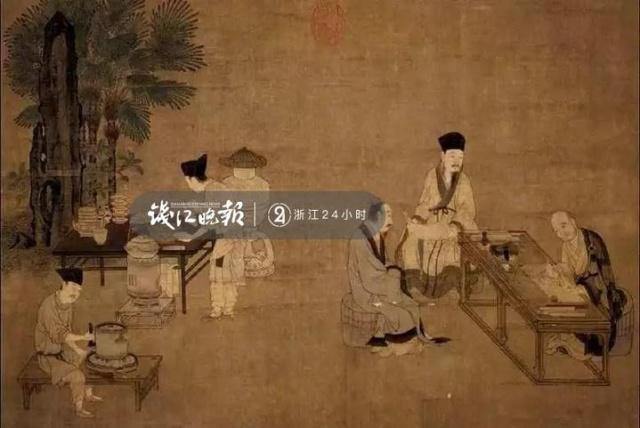(Jingshan Mountain. Photo/Yuhang.gov.cn)
With mountains and hills accounting for 70% of its total area, Zhejiang offers suitable conditions for tea plantations and is a major green tea production area in China. Zhejiang tea culture has played an essential role in Chinese history and in China's relations with other countries.
Lu Yu, respected as the Tea Saint for his contribution to Chinese tea culture and known for his monumental book The Classic of Tea, ever made a special study at Jingshan Mountain in Yuhang District of Hangzhou, Zhejiang Province. Legend has it that the first tea plants were brought to Japan from Jingshan.
The Tea Saint Lu Yu once travelled to the Jingshan Temple and used the spring to brew tea. The place, later remembered as the Lu Yu Spring, is still preserved and kept under protection.
As early as the Tang Dynasty, the founder of the Jingshan Temple planted tea trees in the courtyard. Every spring a tea banquet would be held there, which reached its heyday in the Southern Song Dynasty. It has become a long-cherished wish of many tea lovers to restore the tea banquet of the Southern Song Dynasty.

(Photos/Qianjiang Evening News)
From May 15 to 19, the Third China International Tea Expo, the “Oscar” of tea industry, will be held as scheduled in Hangzhou International Exposition Center. Covering an area of 70, 000 square meters with 3,139 standard booths, the Tea Expo will be attended by more than 1,500 enterprises.
The exhibits cover the entire tea industrial chain including six types of tea, tea sets, dress, accessories, packaging machinery, tea technology and creativity, coffee and tea derivatives. Apart from all tea producing provinces of China, the expo also attracts exhibitors from about 30 countries and regions.
From “drinking tea” to “eating tea”, it is to rejuvenate tea culture through numerous cultural activities. And matcha, which is newly displayed at the Tea Expo, will lead the new tide of tea consumption.
At the site, you will have a chance to travel back to the Southern Song Dynasty together with the tea art specialist dressed in classical attires and enjoy a real Jingshan tea banquet. Don’t forget to take selfies!
(Executive Editor: Yongliu He)